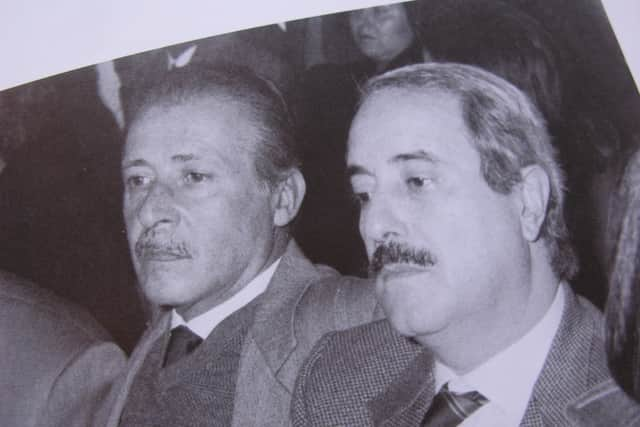Paolo Borsellino and Giovanni Falcone: who were anti-Mafia judges, deaths explained as Messina Denaro arrested
and live on Freeview channel 276
Italian paramilitary police have said they have detained convicted Mafia boss Matteo Messina Denaro at a private facility in Palermo, Messina Denaro was Italy’s number one fugitive, and he was arrested after 30 years on the run.
Though he had eluded capture for decades, he was tried in absentia and convicted of dozens of murders, and now faces multiple life sentences, including imprisonment for two bombings in Sicily in 1992 that murdered top anti-Mafia prosecutors Giovanni Falcone and Paolo Borsellino.
Advertisement
Hide AdAdvertisement
Hide AdBut who exactly were Falcone and Borsellino, and what happened to the judges? Here is everything you need to know.
Who were Giovanni Falcone and Paolo Borsellino?


Giovanni Falcone was an Italian prosecuting magistrate and judge, who spent the majority of his professional life trying to topple the Sicilian Mafia’s authority from his office in the Palace of Justice in Palermo.
Following a lengthy and illustrious career, Falcone presided over the Maxi Trial, which lasted from February 1986 to January 1992.
Based mostly on testimony provided as evidence by former Mafia leaders turned informants, Sicilian prosecutors indicted 475 mafiosi for a variety of offences related to Mafia activity. The majority of them - 338 people - were found guilty, and received sentences totaling 2,665 years, not including the life terms given to 19 bosses.
Advertisement
Hide AdAdvertisement
Hide AdThe convictions were upheld by the Italian Supreme Court, and the Maxi Trial is considered to be the most significant trial ever against the Sicilian Mafia, as well as the largest trial in world history.
Understandably, the Sicilian Mafia were not best pleased with the outcome, and throughout and after the trial, several judges and magistrates were killed, including Falcone and Paolo Borsellino.
Borsellino was a close friend of Falcone, and they both spent their early years in the same neighbourhood in Palermo. Both men participated in Sicily’s war on crime as prosecution magistrates, despite the fact that many of their boyhood friends had Mafia ties.
What happened to them?
Both were killed in 1992, a few months apart, after Sicillian Mafia chief Salvatore Riina ordered their assassinations.
Advertisement
Hide AdAdvertisement
Hide AdFalcone was killed as he travelled along Highway A29 between Palermo International Airport and the city of Palermo. Four hundred kilograms of explosives were placed under the highway after the men assigned to the killing men carried out test drives and experimental explosions to see if the bomb would be powerful enough.
Detonated by remote control from a small outbuilding on a hill to the right of the highway on 23 May 1992, the bomb claimed the lives of Falcone, his wife Francesca Morvillo, and police officers Rocco Dicillo, Antonio Montinaro and Vito Schifani. The explosion was so powerful that it registered on local earthquake monitors.
Borsellino was killed by a car bomb near his mother’s house in Palermo on 19 July 1992, less than two months after the death of Falcone. The bomb also claimed the lives of five police officers: Agostino Catalano, Walter Cosina, Emanuela Loi (the first Italian policewoman to be killed in the line of duty), Vincenzo Li Muli, and Claudio Traina.
The so-called agenda rossa, the red notepad that Borsellino always carried with him and used to record the findings of his investigations, vanished from the scene shortly after the explosion. Salvatore Riina reportedly threw a party, toasting each of their deaths with champagne.
Comment Guidelines
National World encourages reader discussion on our stories. User feedback, insights and back-and-forth exchanges add a rich layer of context to reporting. Please review our Community Guidelines before commenting.
